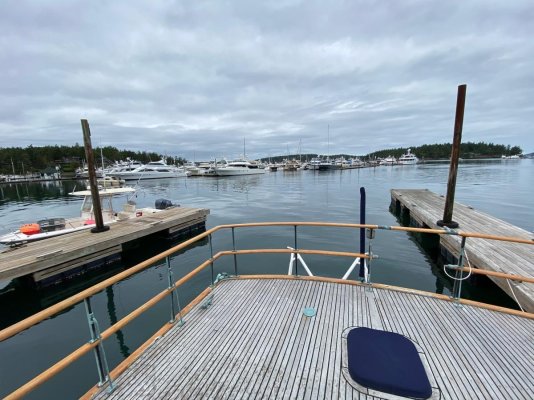Thanks koliver - would that be true of a boat of this era - 1977 - that in fact the decks were glued down?
My first boat was built in 1977. I had a hand in it, so learned what was being used to a small extent. That is why I suggested the use of polysulphide, as that was what was used on my own boat. State of the art at that time?
The pictures above, by NorthLights, demonstrate that by 83, the evolution of technology to not using screws had not started.
Only wooden boats would have not used glue as the primary bond, as there the primary fastening was to wooden frames, not to a flat surface. When fastening to frames, the screws would have been longer. To a flat fibreglass surface the only reason for the screws was to keep the boards from sliding around before the glue set up and formed its own solid bond. After the glue to the flat surface was set up, the grooves between the boards were filled with black, rubbery stuff, then when set up that was sanded down to reveal the teak boards. Modern teak decks use a better rubbery glue in both holding the boards down and filling the grooves.
When I had a quote on redoing some decks on my present boat, about 20 years ago, the method was to use a template, fasten the boards together with the black rubbery stuff, in the shop, then bring the panels thus created to the boat and glue them down, then add margin boards. No screws.






